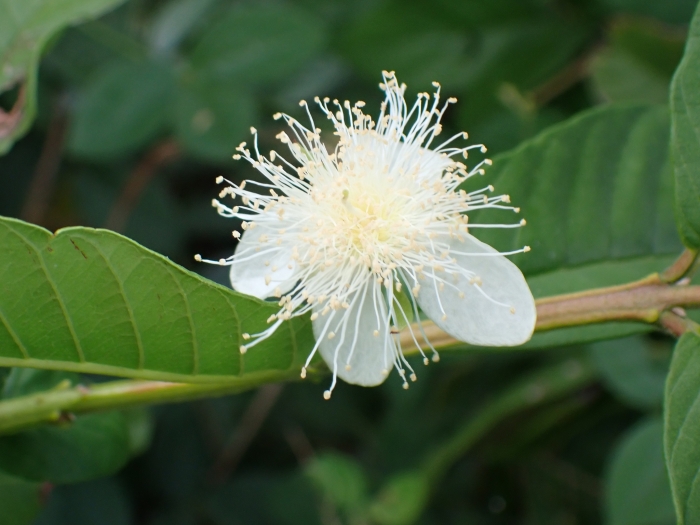Guava
(Psidium guajava)
Guava (Psidium guajava)
/
/

Don Loarie
CC BY 4.0












































































Estimated Native Range
Summary
Guavas are valued for their delicious fruit, which is rich in vitamins A and C, and their ornamental qualities. They are used in culinary applications, from fresh consumption to processed products like jellies and juices. Guavas are also planted as specimen trees, in hedges, and for erosion control. They prefer full sun but can tolerate partial shade and are adaptable to a wide range of soil types, though they thrive in well-drained soils. Regular watering is important, especially during fruit development. Guava trees can be propagated by seeds, cuttings, grafting, or air layering, with vegetative methods offering faster fruit production. They are susceptible to pests like fruit flies and diseases such as guava wilt disease.CC BY-SA 4.0
Plant Description
- Plant Type: Tree, Shrub
- Height: 9-24 feet
- Width: 8-12 feet
- Growth Rate: Moderate
- Flower Color: White
- Flowering Season: Spring
- Leaf Retention: Evergreen
Growth Requirements
- Sun: Full Sun
- Water: Medium
- Drainage: Medium
Common Uses
Bee Garden, Bird Garden, Butterfly Garden, Drought Tolerant, Edible*Disclaimer: Easyscape's listed plant edibility is for informational use. Always verify the safety and proper identification of any plant before consumption., Fragrant, Hedges, Low Maintenance
Natural Habitat
native to a variety of habitats including tropical rainforests, savannas, and scrublands in Central and South America and the Caribbean
Other Names
Common Names: Common Guava, Lemon Guava, Yellow Guava, Apple Guava, Koejawel, Guave, Guavenbaum, Guayave, Guayaba, Guayabo
Scientific Names: , Psidium guajava, Psidium guava, Psidium guajava var. guajava, Psidium pyriferum, Psidium pomiferum, Psidium pumilum, Psidium cujavillus, Psidium guajava var. pumilum, Psidium angustifolium
GBIF Accepted Name: Psidium guajava L.